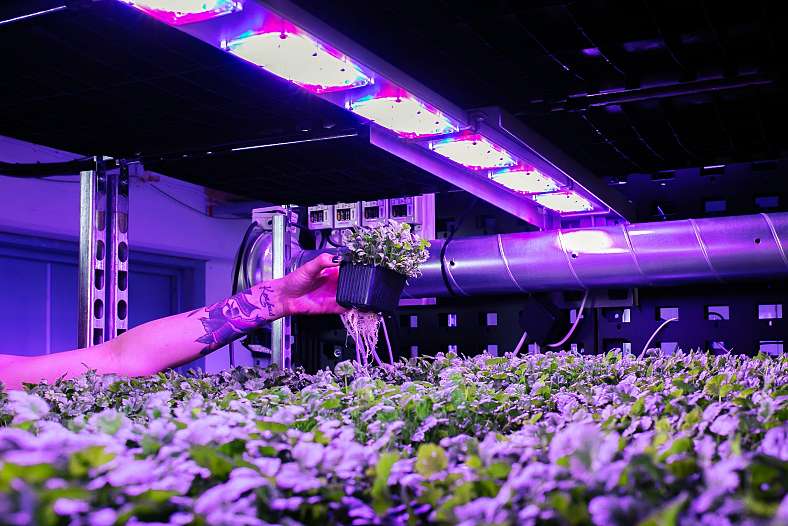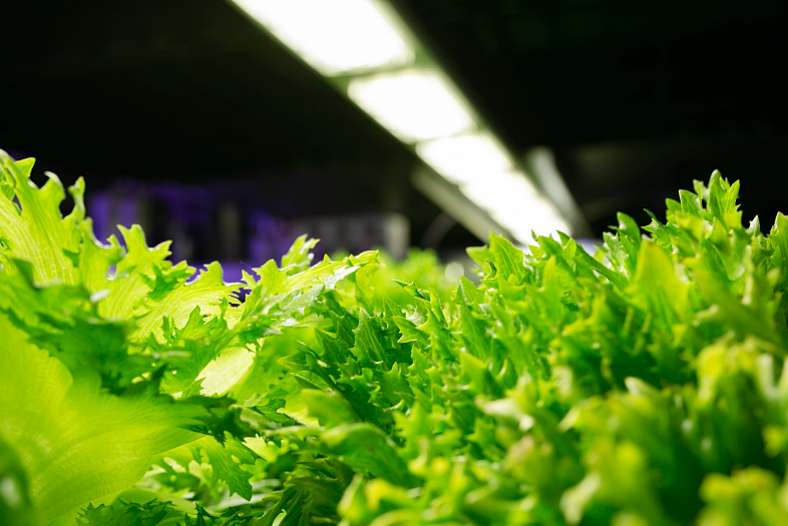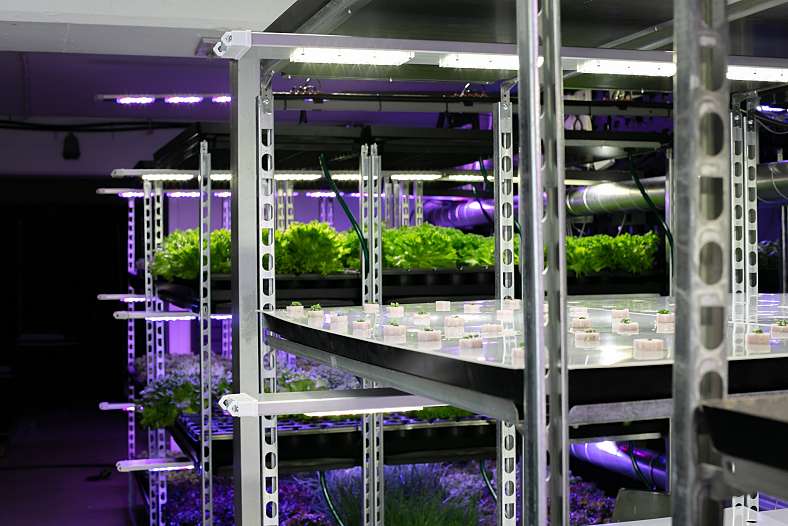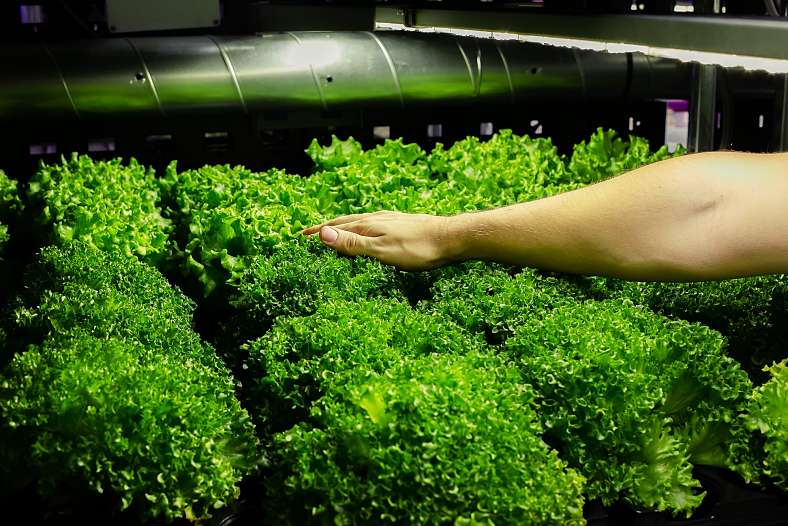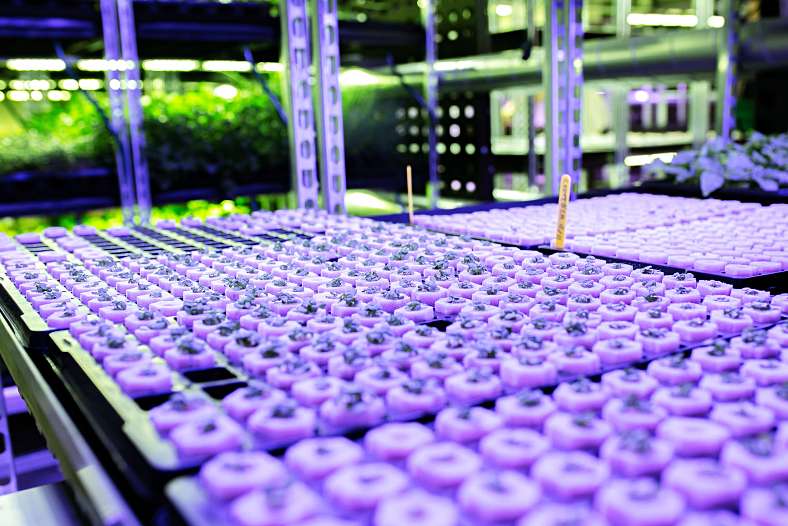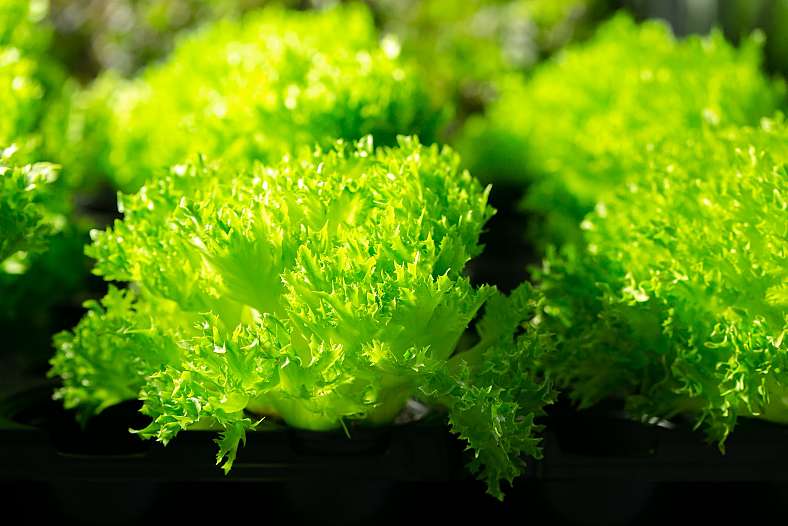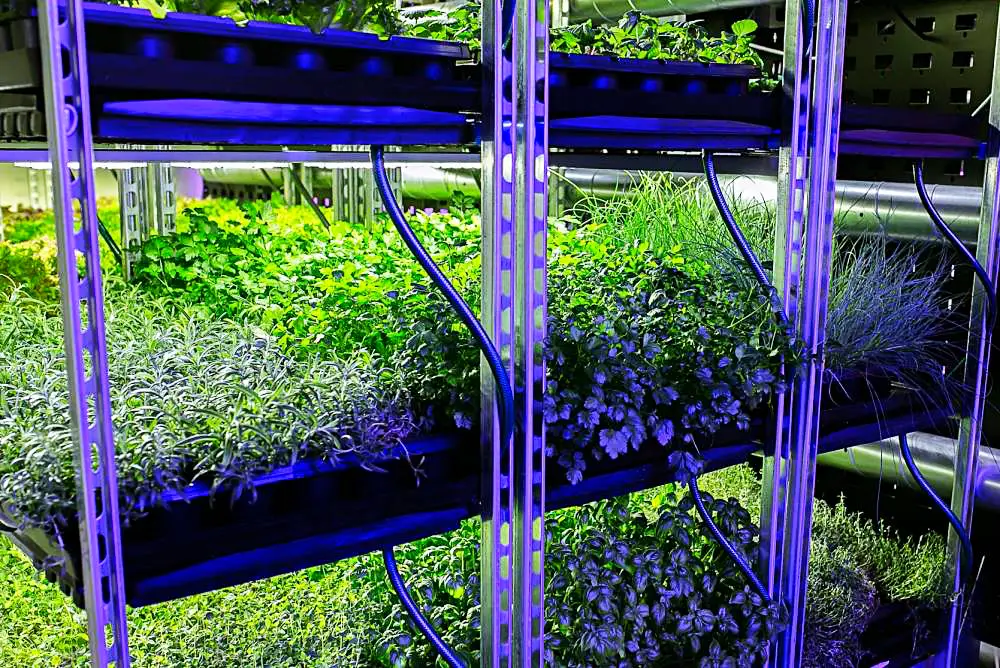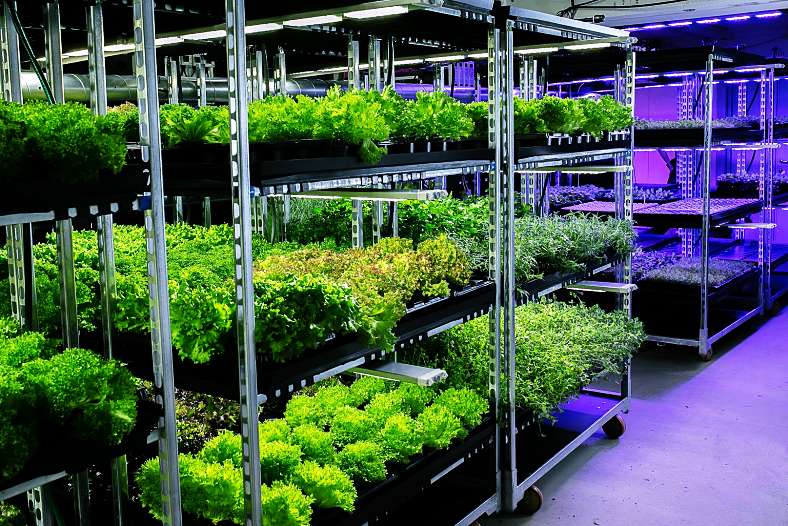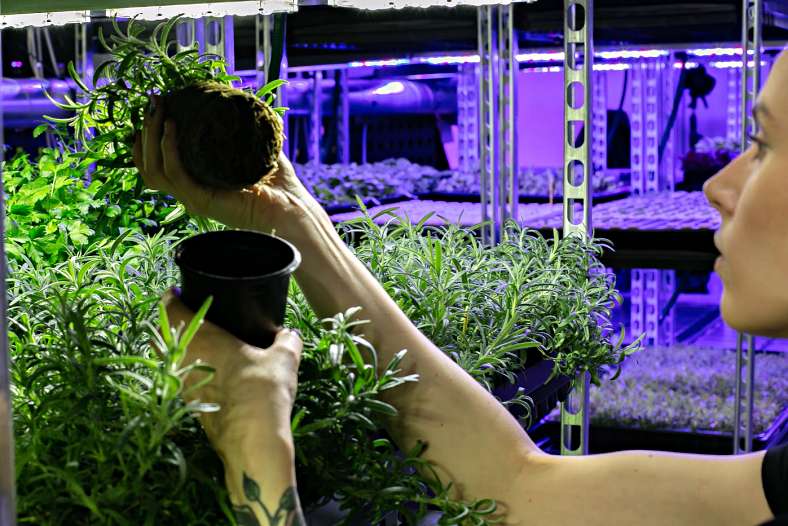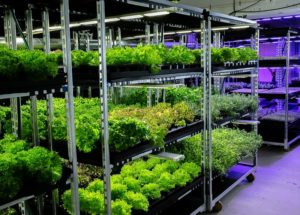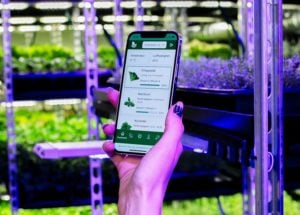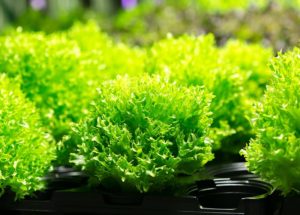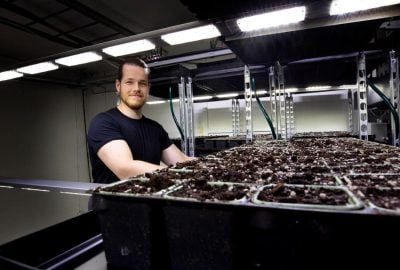Current vertical farming investors mean business. They are out to save the world and make large profits in the process. Bill Gates, Jeff Bezos, Google Ventures, IKEA, and Walmart invest millions in vertical farming. Their interest isn’t peaked by shared values alone; they see a market that welcomes indoor plant growth. Industry giants worldwide are slowly following in the footsteps of Gates, Bezos, IKEA, and Google, which begs the question: What does vertical farming mean to investors?
Relevant article: Why is CEA growing so fast? (Controlled Environment Agriculture)
Vertical farming might sound futuristic, but the technology has been around for some time. Modern vertical farming was conceived at Columbia University, New York, in 1999. Professor Dickson Despommier and his students designed the transformation of a skyscraper into a vertical farm that could feed 50.000 people.
The first commercially successful vertical farm was started in 2015. It began as a small plant company in New Jersey, only a few kilometers from Columbia University. The company was called AeroFarms.
One year later, AeroFarms had turned into a 6.500 m2 vertical farm, the biggest of its kind in the world. AeroFarms’ success led to worldwide research, development, and investment, but where is the vertical farming industry right now?
Contents
- Why is vertical farming a good investment for the future?
- How can vertical farming solidify industry foothold?
- What is the best way to invest in vertical farming?
Why is vertical farming a good investment for the future?
There are several good answers to this question. For one, vertical farming is a good investment because it has yet to take off. This means that you have a golden opportunity to get in early on a business that will likely skyrocket soon.
The question is timing. You want to invest early on, but not so early that you have to wait for an industry that keeps dragging its feet for years. At the same time, it is vital to invest before the world catches on and the market value rises sky-high.
There was a time when bitcoins were affordable. Who hasn’t wished they invested in a few coins back then? In five years, many investors might be plagued by a similar question: Why didn’t I invest before the vertical farming competition got fierce?
The world demands sustainable food production
Secondly, vertical farming is a good investment for the future because the demand for sustainable plant growth is rapidly increasing. To be honest, vertical farms are not entirely sustainable at the moment, but they are designed to become so. In other words, vertical farming comes with many environmentally friendly solutions.
A crucial piece of the puzzle is energy consumption. As soon as plant researchers find a way to reduce electrical usage, production costs will decrease, and sustainability will be secured. Read more about the future of plant technology in our article about research on vertical farming.
The marketing potential of vertical farming makes it a promising prospect to investors. Since vertical farming doesn’t require arable land, heavy watering, or chemical use, it is easily promoted as a green option to traditional agriculture. On top of that, the news value of vertical farming makes new businesses interesting to the press.
Depending on your country of origin, vertical farmers might still enjoy the luxury of low competition. If your area has yet to develop a solid vertical farming community, it’s an opportunity to take the lead and build a strong brand before the community catches on.
New consumers prioritize health
Lastly, vertical farming is a good investment for the future because it answers an ever-increasing popular demand. People eat more fruit and vegetables, and we are more concerned about food quality than ever before.
Vertical farms cultivate plant growth without pesticides or chemicals. Thanks to cutting-edge plant science, indoor farms grow tastier and more nutritious plants than most traditional farms. How is that possible? Check out this article to find out more:
Related article: Vertical farming vs. traditional farming
In November 2021, Bloomberg highlighted a BIS research study that predicted the market value of the vertical farming industry to reach 19.86 billion by 2026. This equals a 24.30 percent growth between 2021 till 2026. In other words, vertical farming will become a lot more widespread in the years to come.
The principal analyst behind the BIS Research report had this to say about the vertical farming industry:
«Vertical farming has the capability of revolutionizing the global agricultural industry. Through advanced farming techniques, year-round food production can be done, and thus, agricultural production can be increased, and global food demand can be efficiently managed.»
However promising this might sound, we need a better grasp of the possibilities and challenges in vertical farming to fully understand why it is a good investment for the future.
Relevant article: Vertical farming’s biggest challenges

How can vertical farming solidify industry foothold?
The vertical farming methods and tactics are sound. The industry would be taking off already if it weren’t for a few missing technological puzzle pieces. The good news is that some of the best scientists in the world are on the case and keep improving the vertical farming business every year.
Microsoft Research is heavily invested in the vertical farming industry. Microsoft is developing AI for plant growth automation, among other things. As long as this research makes strides, vertical farming will become increasingly cost-effective.
Another critical missing piece of the vertical farming puzzle is industry recognition. Some countries are way ahead of others in this area. Vertical farming has gotten a solid industry foothold in America, Japan, Singapore, Germany, and the Netherlands.
Industry obstacles to vertical farming
In our native Norway, on the other hand, vertical farmers are troubled by sales regulations and a market governed by large wholesalers. In short, all supermarket chain stores except one buy all their produce from two wholesalers.
The icing on the carrot cake is that these wholesalers are in league with a couple of national farming organizations in which most traditional farmers are members. As a vertical farmer, you must broker a deal with the wholesalers on your own.
Make sure to research what kind of legislation, organizations, and competition the vertical farmers must deal with in your part of the world. This is crucial information to all investors since it might make or break new startups.
It is, of course, possible to find other good customers than supermarket chain stores. Restaurants, health food stores, markets, specialty stores, office food services, schools, and many other businesses are viable customers.
That said, big sales tend to come from supermarket chain stores. It’s likely just a matter of time before regulations change, and new organizational structures appear, but it might be a tough wait until it does.
One possible solution is to broker a long-lasting agreement between farmers’ organizations, wholesalers, and vertical farmers. Another solution would be to start up a new organization that works to promote vertical farms exclusively.
What is the best way to invest in vertical farming?
Your first option is to get in at ground level and start your own vertical farm. The startup cost might be discouraging, but this is where Avisomo comes in. We want to see the vertical farm industry grow, so we designed a vertical farming system so flexible that all variables, including startup size, are up to you.
This means that you can start as big or as small as you want and learn the ropes of vertical farming at your own pace. And best of all, you can adjust the startup to your financial situation. Once the profit has stabilized, you can start expanding and scaling your business according to your funding options.
Sounds interesting? Then reach out to Avisomo. We are happy to answer any questions you might have.
This is how German Infarm got started in 2013. Their first plants were grown in a caravan somewhere in Berlin. In 2021, Infarm became the first vertical farming company in Europe to be valued at more than $1 billion.
Stock options for investors in vertical farming
Another way to invest in vertical farming is to buy stocks. Considering the current growth in the vertical farming industry, many new and exciting ventures are bound to appear. Your biggest challenge will be to single out those with the right ambitions and the will to realize their dreams.
The fact that Microsoft, Google, and SoftBank are investing heavily in vertical farming is a very good sign. It tells us that the titans of technology are working their magic and pushing the industry forth.
A final option for investors to get a piece of the vertical farming industry cake is to buy stocks in companies that supply indoor farming or develop its technology.
Finding good candidates might require substantial research, but the current growth in the vertical farming market will breed a wide range of supporting businesses. In line with the industry growth comes an increased need for equipment.
New vertical farmers will require LED grow lights, plant mediums, irrigation systems, farming systems, and a whole lot more to get started and expand their business. It is all about supply and demand, and vertical farming’s demand will create great earning opportunities for suppliers, plant scientists, and investors.
Conclusion
Vertical farming offers new and exciting opportunities for investors, especially since it has the potential to unite sustainable food production and large revenue generation. It is a powerful combo that has already caught the attention of the largest technology developers in the world.
Investments from companies like Microsoft, Google, SoftBank, Amazon, and IKEA further strengthen vertical industry growth. In America, Walmart is taking vertical farming production to the next level.
Recently, Walmart brokered a deal with a vertical farming company called Plenty. As a result, vertically grown plants will soon be readily available all over America. The question isn’t whether the same will happen worldwide; the question is when?
Related article: Vertical farming vs. traditional farming
Resources
CNBC: A Dutch vertical farming company has just been valued at over $1 billion
CNBC: Walmart makes an investment in vertical farming start-up Plenty
MDPI: State of the Art of Urban Smart Vertical Farming Automation System: Advanced Topologies, Issues, and Recommendations
Microsoft Features: Indoor vertical farming in Asia and beyond: Digging deep in data
Vertical Farming Planet: The Full History of Vertical Farming: When Did It All Start?


